
Fast Forward Squishable Axolotl Archives Fast Forward
The total life expectancy of an axolotl is 12-15 years. That means that as long as you treat them correctly and you give them good care, they will last for quite a long time. however, their development until they become fully grown axolotls is quite short. They have 5 stages of development, and each stage takes some time.

Mexican Axolotl Life Cycle
Aging in the axolotl: The axolotl life cycle occurs at a more rapid rate than humans. Embryogenesis takes approximately two weeks after which time the larval animals will hatch out from their eggs as free-swimming animals. These larvae will continue to develop in the following months where they will pattern limbs, develop lungs, and rapidly.
Improve Ally Mixed life cycle of an axolotl Suradam overlook In most cases
Average Life Span In The Wild: 10 to 15 years Size: Up to 12 inches Weight: 2.11 to 8 ounces Size relative to a teacup: IUCN Red List Status: Critically endangered LC NT VU EN CR EW EX Least.

Axolotl life cycle in 2022 Life cycles, Axolotl, Life
In the axolotls' life cycle, the small teeth can grip the food after which, it can be swallowed whole. Other than that, they have rudimentary lungs in which they need to occasionally rise from the water so that they can breathe. These lungs are a great part of the life cycle of the axolotl.
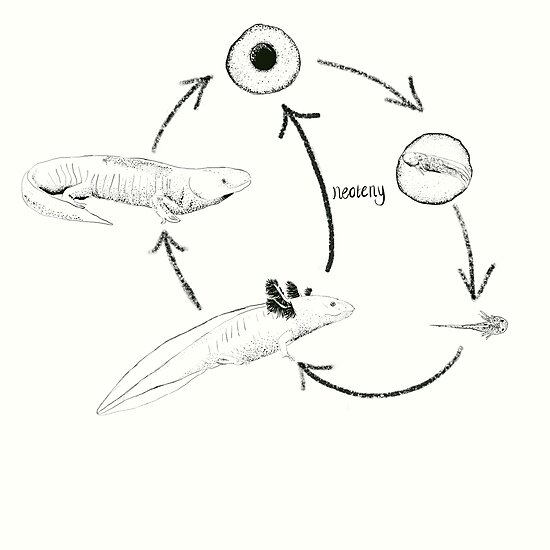
"Axolotl Metamorphosis Neoteny Diagram" Photographic Print by Redbubble
The axolotl is a type of salamander. It has a long tail, flat head, and four lizard-like limbs, which it uses to move around the lake floor. But unlike other salamanders, axolotls are neotenic.
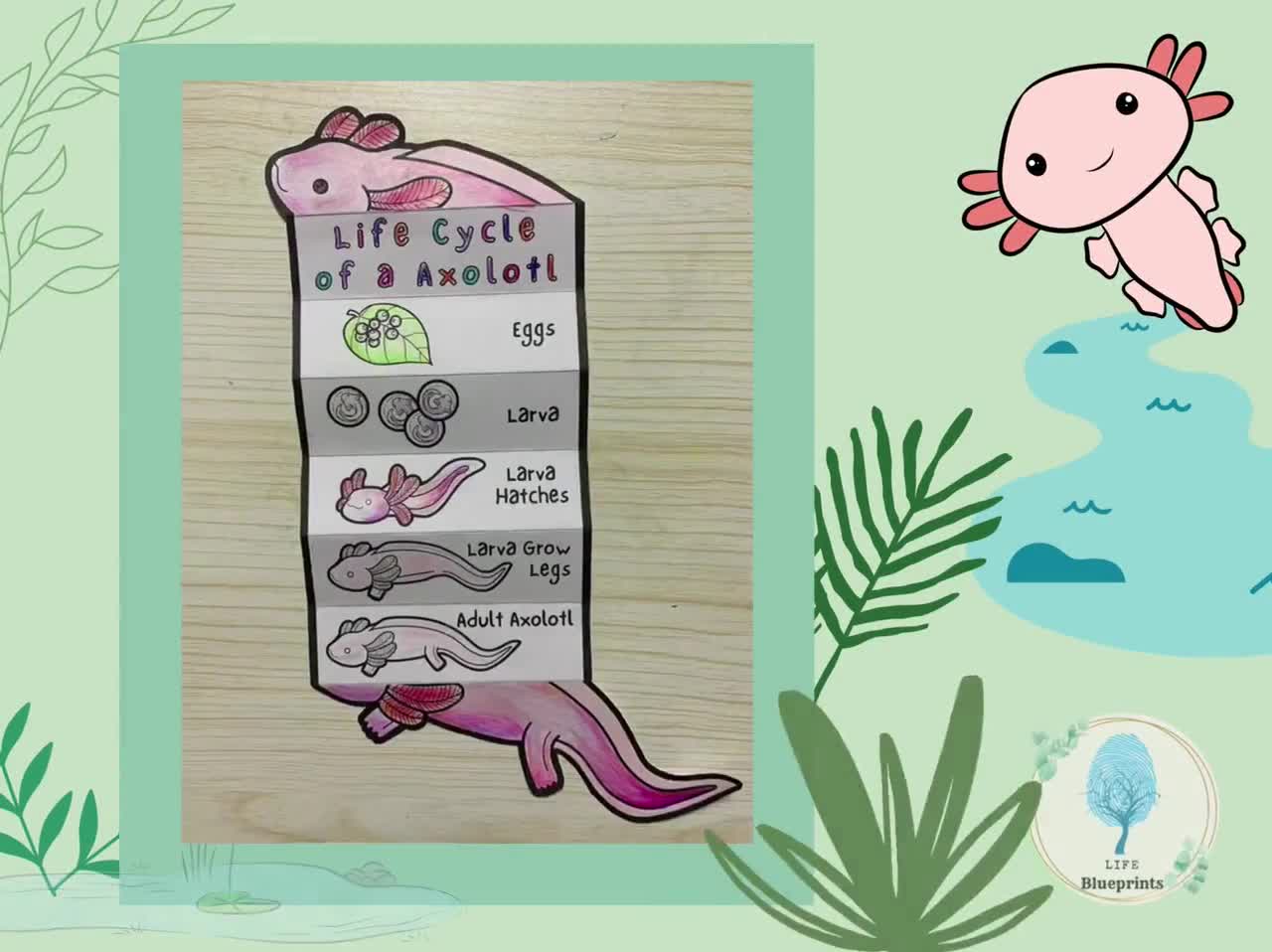
Improve Ally Mixed life cycle of an axolotl Suradam overlook In most cases
A. What is an Axolotl? The axolotl, scientifically known as Ambystoma mexicanum, is a unique and captivating creature that has captured the attention of scientists and animal enthusiasts alike. Native to the ancient lakes of Mexico, these neotenic salamanders have become a symbol of evolutionary marvels and genetic wonders.
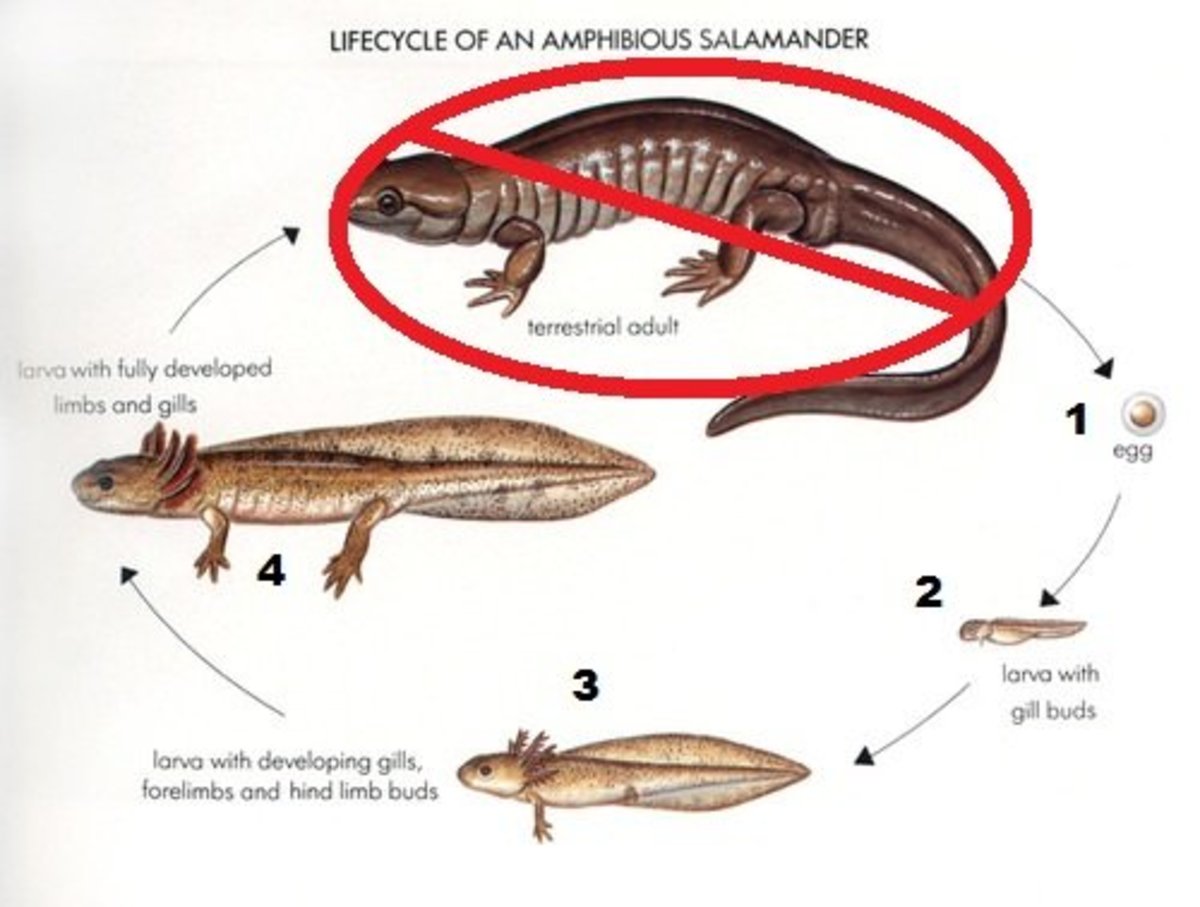
Everything AxolotlA Basic Guide for New Owners
The life cycle of an axolotl begins when a female lays her eggs. These eggs are typically laid on aquatic plants or other surfaces within the water. Once the eggs are laid, the male fertilizes them, and the development of the embryo begins. Axolotl eggs take around 10-14 days to hatch, depending on the water temperature.
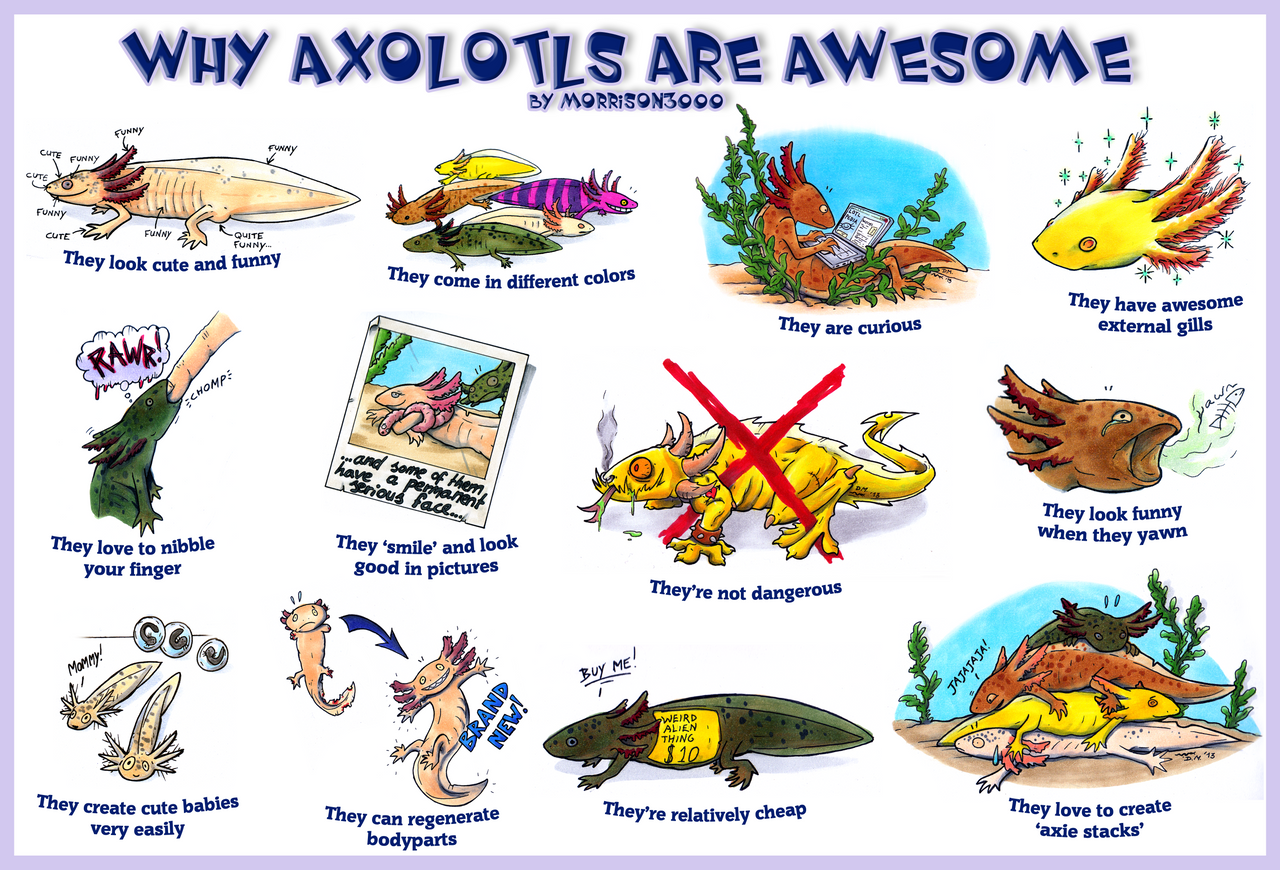
Why axolotls are awesome by LoonyMadness on DeviantArt
June 27, 2023 by naveenakhriya 4.5/5 - (14 votes) Have you ever heard of the fascinating creature known as the axolotl? These unique amphibians captivate the hearts and minds of people all over the world with their extraordinary features and intriguing life cycle.
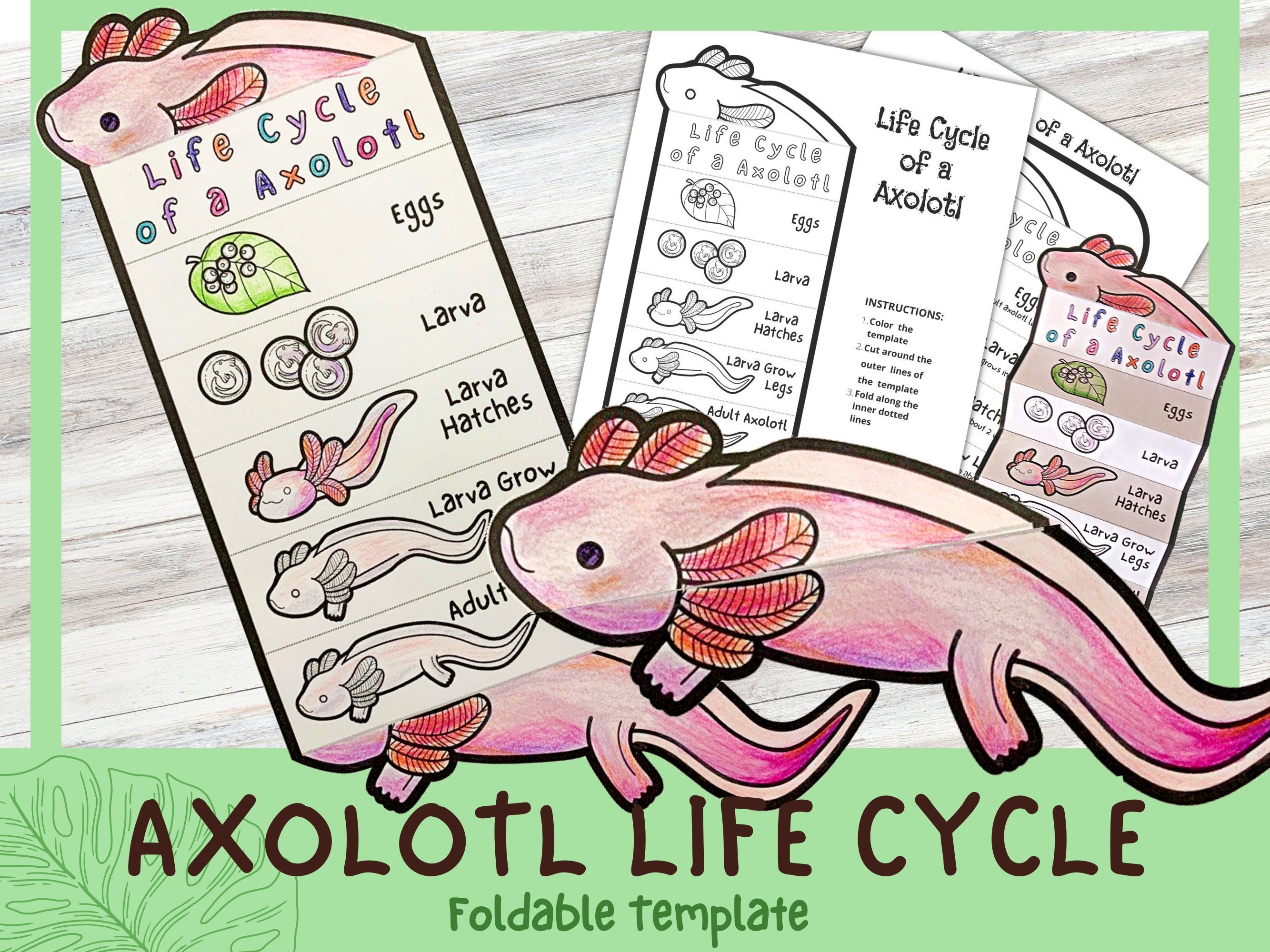
Axolotl Life Cycle Foldable Amphibian Life Cycle Learning Etsy Ireland
An axolotl is a type of water salamander that is stuck in its larval stage like a permanent tadpole, never growing up to be an adult. In the wild, many did grow up to be adult water salamanders, completing the cycle. But in captivity, it is very, very rare for an axolotl to fully complete its difficult metamorphosis.
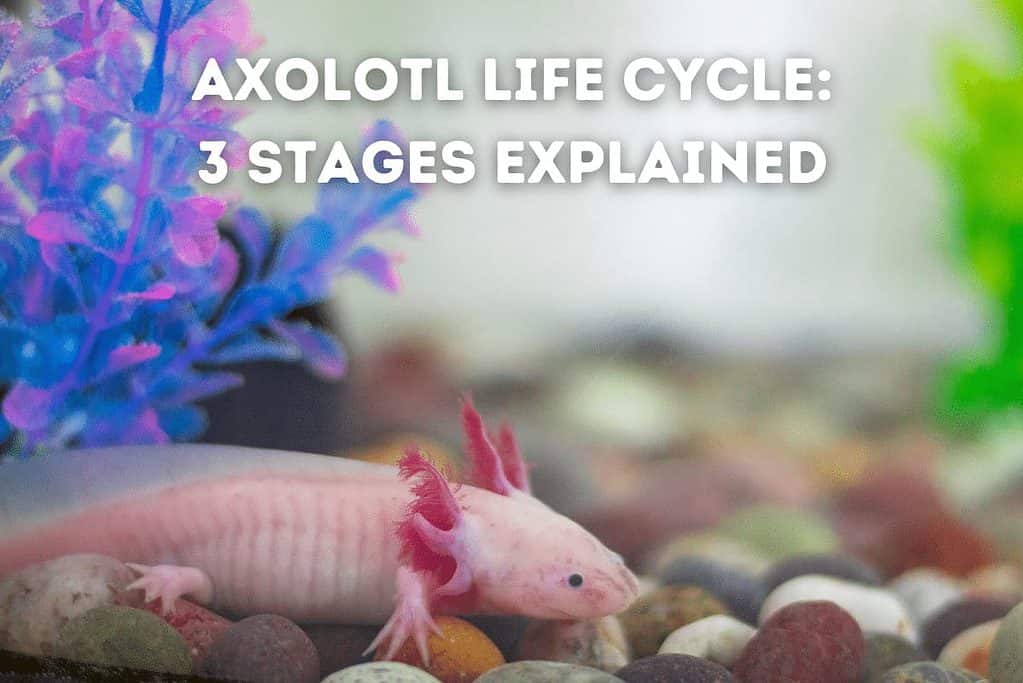
What Is the Life Cycle of An Axolotl? Pets From Afar
Lifecycle Of An Axolotl Whether you are a caring and concerned axolotl owner looking to breed axolotls or a student of science, the observation and know-how of the lifecycle of an axolotl can be a rewarding and cool undertaking. An axolotl spends all its life under the water.

Axolotl anivivi
The typical life cycle of a salamander has 3 different stages: egg, larva, and adult.

"The Evolution of the Axolotl" by TheGuyWithStuff Redbubble
Axolotls' life cycle begins as a female lays her eggs, which the male fertilizes. Their eggs are laid in clusters and are generally attached to aquatic plants or rocks. As the Axolotl eggs fertilize, they take about 10 to 14 days and then hatch into larvae. The larvae further feed on small aquatic organisms and grow rapidly.

Download Diagram Showing Life Cycle Of Salamander for free Life cycles, Salamander, Frog life
Eggs: the life cycle begins with a female Axolotl laying eggs, usually attaching them to plants or other surfaces in the water. Larvae: after a few weeks, the eggs hatch into larvae. At this stage, they have external gills for breathing underwater and a tail for swimming. they rely on their yolk sack for nutrition

Advances in Decoding Axolotl Limb Regeneration Trends in
Its unique feature, however, lies in its life cycle: while other amphibians mature by metamorphosing into adults through several stages, the Axolotl remains in its larval form for life! This means it never undergoes full maturity as most species do; instead, they remain in its juvenile state indefinitely.

About Axolotls Malinda Rene
Axolotls go through three main stages in their life cycle: egg development, larval stage, and metamorphosis. During the egg development stage, female axolotls release eggs and male axolotls release sperm for external fertilization. The embryos are protected by a gel-like substance that provides nutrients and oxygen for growth.

Bad title Embryology Axolotl pet, Axolotl care, Axolotl
A sexually mature adult axolotl, at age 18-27 months, ranges in length from 15 to 45 cm (6 to 18 in), although a size close to 23 cm (9 in) is most common and greater than 30 cm (12 in) is rare. Axolotls possess features typical of salamander larvae, including external gills and a caudal fin extending from behind the head to the vent.